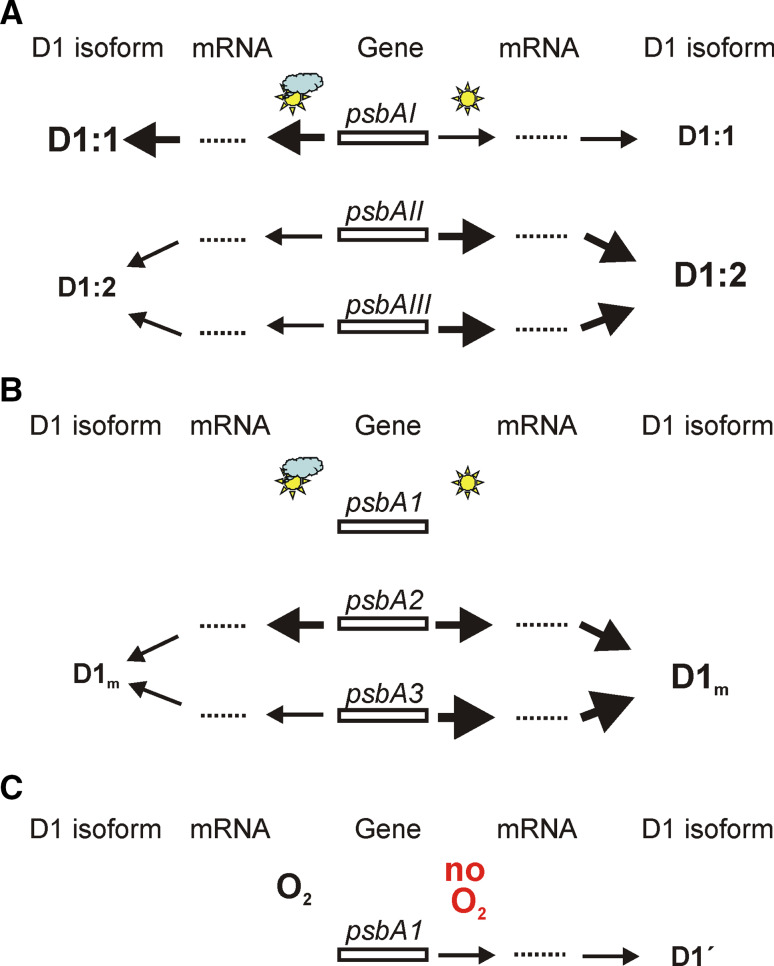Fig. 2.
Mode of expression of the psbA genes. a Regulation of the psbA genes in Synechococcus 7942, which contains the D1:1 and D1:2 forms. Upon standard conditions, the psbAI gene is actively transcribed while the psbAII and psbAIII genes are repressed, and accordingly the D1:1 isoform is synthesized and accumulates in PSII complexes. High light (or other stresses resulting in thiol-reducing conditions) activates the transcription of the psbAII and psbAIII genes with concomitant inactivation of psbAI. Consequently, the D1:2 isoform accumulates in PSII complexes. Adaptation to the new ambient conditions reverses the situation. b Regulation of the psbA2 and psbA3 genes in Synechocystis 6803, which contains the D1m and D1′ forms. Under standard conditions, the psbA1 gene is silent and most of the psbA transcripts and the D1m protein are produced by the psbA2 gene. Intense illumination results in enhanced transcription rate of the psbA2 and especially that of psbA3, providing transcripts for rapid D1 turnover. Transcription of trace amounts of psbA1 gene also occurs at high light intensity, but no D1′ protein has been found to accumulate in PSII complexes. c Regulation of the “silent” psbA1 gene, which is induced under low O2 pressure and encodes the D1′ form. Transcript or protein products of the psbA1 gene in Synechocystis 6803, previously thought to be a silent gene, cannot be detected under standard growth conditions. Microaerobic or anaerobic conditions result in activation of transcription

